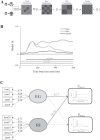Neural representation of perceived race mediates the opposite relationship between subcomponents of self-construals and racial outgroup punishment
- PMID: 37143178
- PMCID: PMC10786092
- DOI: 10.1093/cercor/bhad157
Neural representation of perceived race mediates the opposite relationship between subcomponents of self-construals and racial outgroup punishment
Abstract
Outgroup aggression characterizes intergroup conflicts in human societies. Previous research on relationships between cultural traits and outgroup aggression behavior showed inconsistent results, leaving open questions regarding whether cultural traits predict individual differences in outgroup aggression and related neural underpinnings. We conducted 2 studies to address this issue by collecting self-construal scores, EEG signals in response to Asian and White faces with painful or neutral expressions, and decisions to apply electric shocks to other-race individuals in a context of interracial conflict. We found that interdependent self-construals were well explained by 2 subcomponents, including esteem for group (EG) and relational interdependence (RI), which are related to focus on group collectives and harmonious relationships, respectively. Moreover, EG was positively associated with the decisions to punish racial outgroup targets, whereas RI was negatively related to the decisions. These opposite relationships were mediated by neural representations of perceived race at 120-160 ms after face onset. Our findings highlight the multifaceted nature of interdependent self-construal and the key role of neural representations of race in mediating the relationships of different subcomponents of cultural traits with racial outgroup punishment decisions in a context of interracial conflict.
Keywords: EEG; interdependence; intergroup conflicts; punishment decisions; race.
© The Author(s) 2023. Published by Oxford University Press. All rights reserved. For permissions, please e-mail: journals.permissions@oup.com.
Conflict of interest statement
None declared.
Figures





Similar articles
-
Culture moderates the relationship between interdependence and face recognition.Front Psychol. 2015 Oct 27;6:1620. doi: 10.3389/fpsyg.2015.01620. eCollection 2015. Front Psychol. 2015. PMID: 26579011 Free PMC article.
-
Racial outgroup favoritism in neural responses to others' pain emerges during sociocultural interactions.Neuropsychologia. 2022 Sep 9;174:108321. doi: 10.1016/j.neuropsychologia.2022.108321. Epub 2022 Jul 11. Neuropsychologia. 2022. PMID: 35835232
-
Preliminary evidence that testosterone's association with aggression depends on self-construal.Horm Behav. 2017 Jun;92:117-127. doi: 10.1016/j.yhbeh.2016.10.014. Epub 2016 Nov 2. Horm Behav. 2017. PMID: 27816624
-
Intergroup threat and outgroup attitudes: a meta-analytic review.Pers Soc Psychol Rev. 2006;10(4):336-53. doi: 10.1207/s15327957pspr1004_4. Pers Soc Psychol Rev. 2006. PMID: 17201592 Review.
-
Perceiving ingroup and outgroup faces within and across nations.Br J Psychol. 2022 Aug;113(3):551-574. doi: 10.1111/bjop.12563. Epub 2022 Apr 6. Br J Psychol. 2022. PMID: 35383905 Review.
References
-
- Amodio DM, Cikara M. The social neuroscience of prejudice. Annu Rev Psychol. 2021:72:439–469. - PubMed
-
- Batson CD, Chang J, Orr R, Rowland J. Empathy, attitudes, and action: Can feeling for a member of a stigmatized group motivate one to help the group? Personal Soc Psychol Bull. 2002:28:1656–1666.
-
- Cheon BK, Dm I, Harada T, Kim JS, Mathur VA, Scimeca JM, Parrish TB, Park HW, Chiao JY. Cultural influences on neural basis of intergroup empathy. NeuroImage. 2011:57:642–650. - PubMed
-
- Correll J, Urland GR, Ito TA. Event-related potentials and the decision to shoot: the role of threat perception and cognitive control. J Exp Soc Psychol. 2006:42:120–128.
Publication types
MeSH terms
LinkOut - more resources
Full Text Sources

